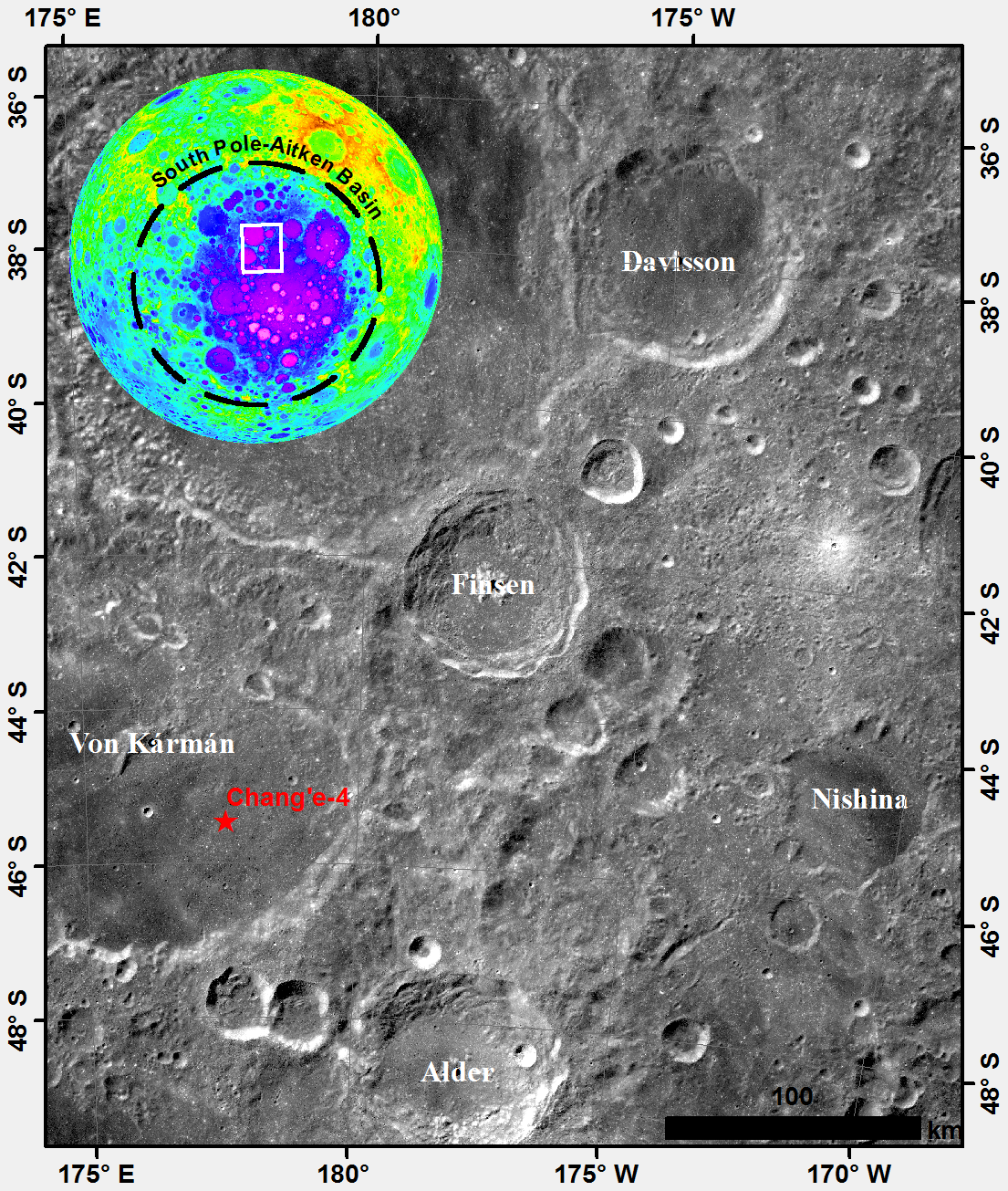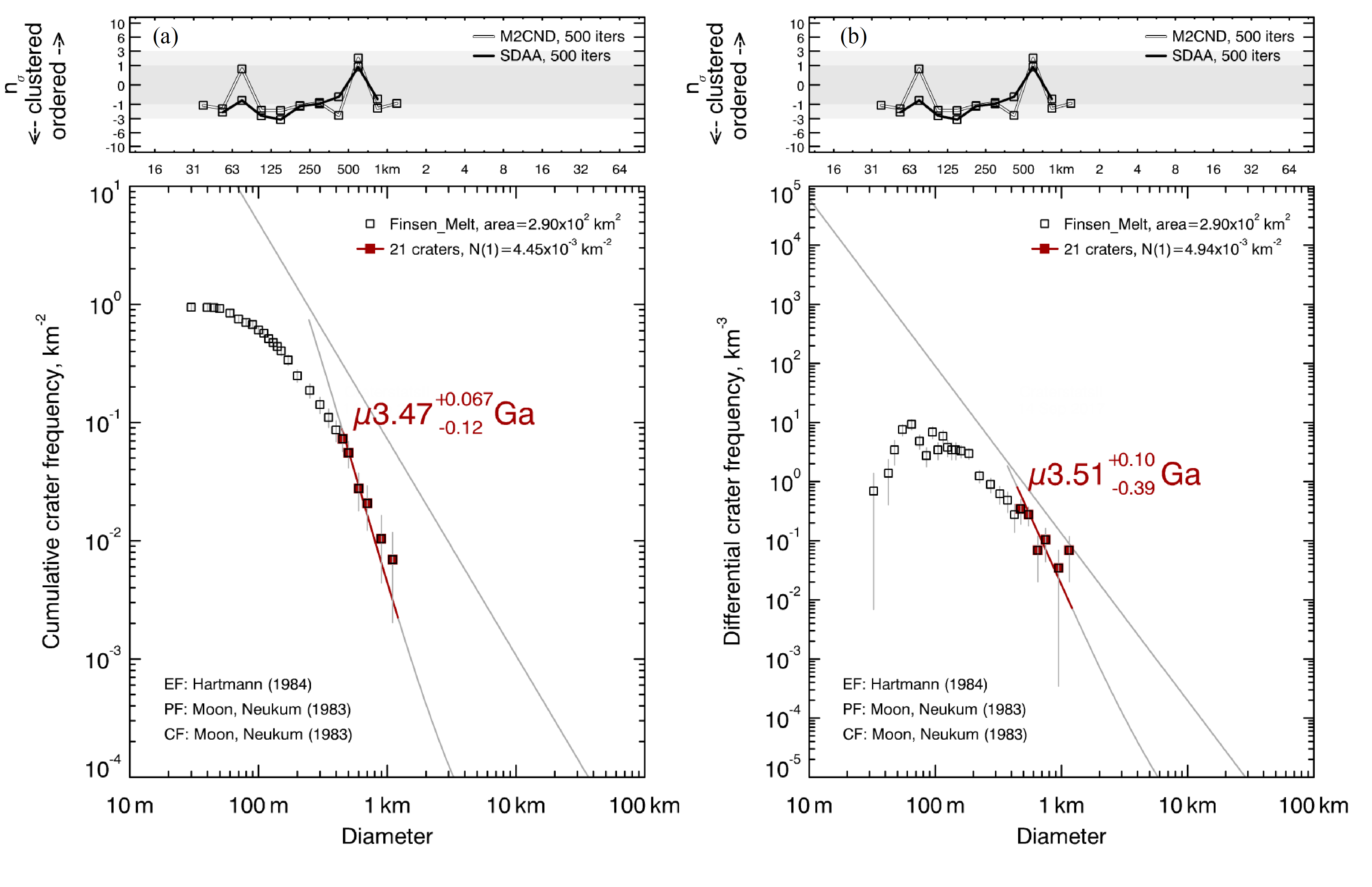3.5 Billion Years Old---Geologic Age of Finsen Crater on Farside of Moon Determined
The absolute model age (AMA), or geologic age of Finsen crater on the Moon’s farside is determined to be about 3.5 billion years (Ga) based on crater counting method, according to a research paper titled “Absolute model age of lunar Finsen crater and geologic implications” which was published online in the journal of Icarus. The research is conducted by the planetary mapping and remote sensing team led by Prof. DI Kaichang from the State Key Laboratory of Remote Sensing Sciences under the Aerospace Information Research Institute (AIR), Chinese Academy of Sciences (CAS). Based on this model age, the regolith growth rate at the Chang-e 4 landing site and the crater degradation rate within Finsen crater have also been estimated.
China's Chang'e-4 probe, including a lander and a rover, successfully touched down the floor of Von Kármán crater within the South Pole-Aitken (SPA) basin on the farside of the Moon on January 3, 2019 (Fig. 1). Since then, Chang'e-4 rover has been traversing on the floor of Von Kármán crater and has carried out a string of in situ measurements along traverse with equipped scientific payloads, enabling scientists to study unexplored lunar areas in great detail.

Fig. 1. Context map of Chang'e-4 landing site.
Although multiple studies have revealed that Finsen crater ejecta is the primary source of materials measured inside of Von Kármán crater, where Chang’e-4 rover landed, the formation age of Finsen crater, which has significant geologic implications, is still at odds within the planetary community.
The team used Chang'e-2 digital orthophoto map (DOM) and digital elevation model (DEM) data in their research. First, they outlined a flat and homogenous area on the floor of Finsen as crater count area. Second, they manually mapped craters in the outlined area. Third, the AMA of Finsen crater is determined by fitting the obtained crater size-frequency distribution (CSFD) to standard lunar cratering chronology. Both cumulative and differential fits (Fig. 2) reveal an AMA of ~3.5 Ga, indicating Finsen crater is Imbrium-aged.

Fig. 2. AMAs of Finsen crater derived by different fits.
Radar images indicate that the thickness of the Finsen crater ejecta-sourced fine-grained regolith at Chang'e-4 landing site is about 12 m. The team thus estimated the average regolith growth rate at the Chang'e-4 landing site is about 3.4 m/Gyr. Compared with Apollo landing sites of similar age, the regolith growth rate at Chang'e-4 landing site is greater, except for Apollo 16, suggesting a low weathering resistivity of Finsen crater ejecta to the harsh space environment.
There are many simple craters on the floor of Finsen crater, which are easily degraded by erosion of crater rim and infilling of crater interior through geologic processes. The team further calculated the current depth of 25 largest craters within the outlined area through a profile-average-depth method and estimated crater degradation rate within Finsen is about 21 ± 3 m/Gyr. This degradation rate has the same order of magnitude to that on the lunar maria (about 32 m/Gyr), indicating lunar craters might have a similar degradation rate on a global scale. However, the rate is much slower than that on other airless rocky bodies, for example, average degradation rate on Vesta is 350 m/Gyr, and on Gaspra is 100-1000 m/Gyr. One of the most likely reasons is that craters on asteroids are easily degraded or even erased by mass movements caused by impact-induced global seismic shaking.



News & Events